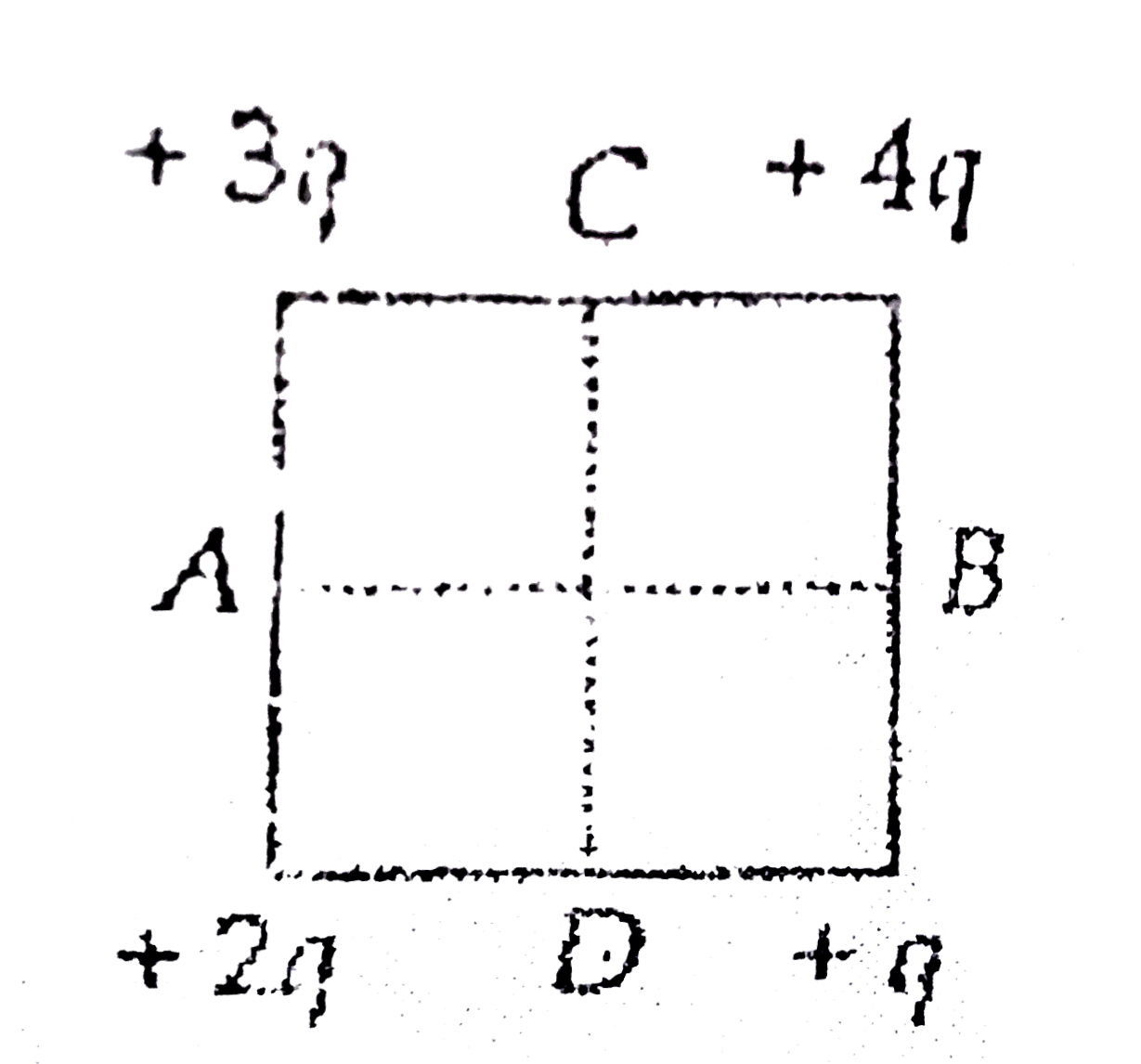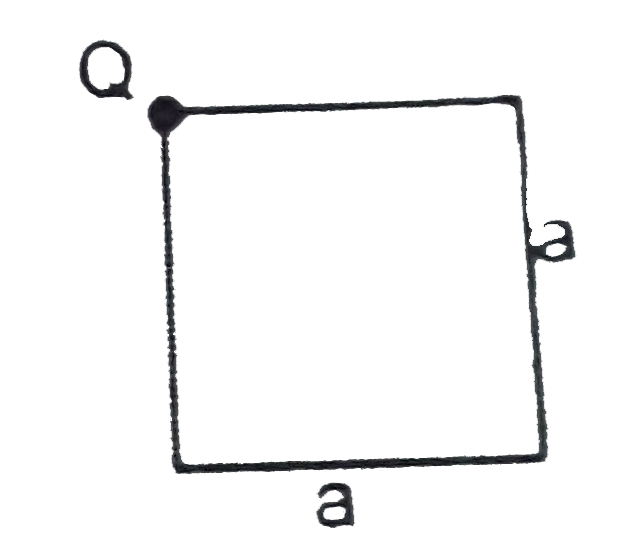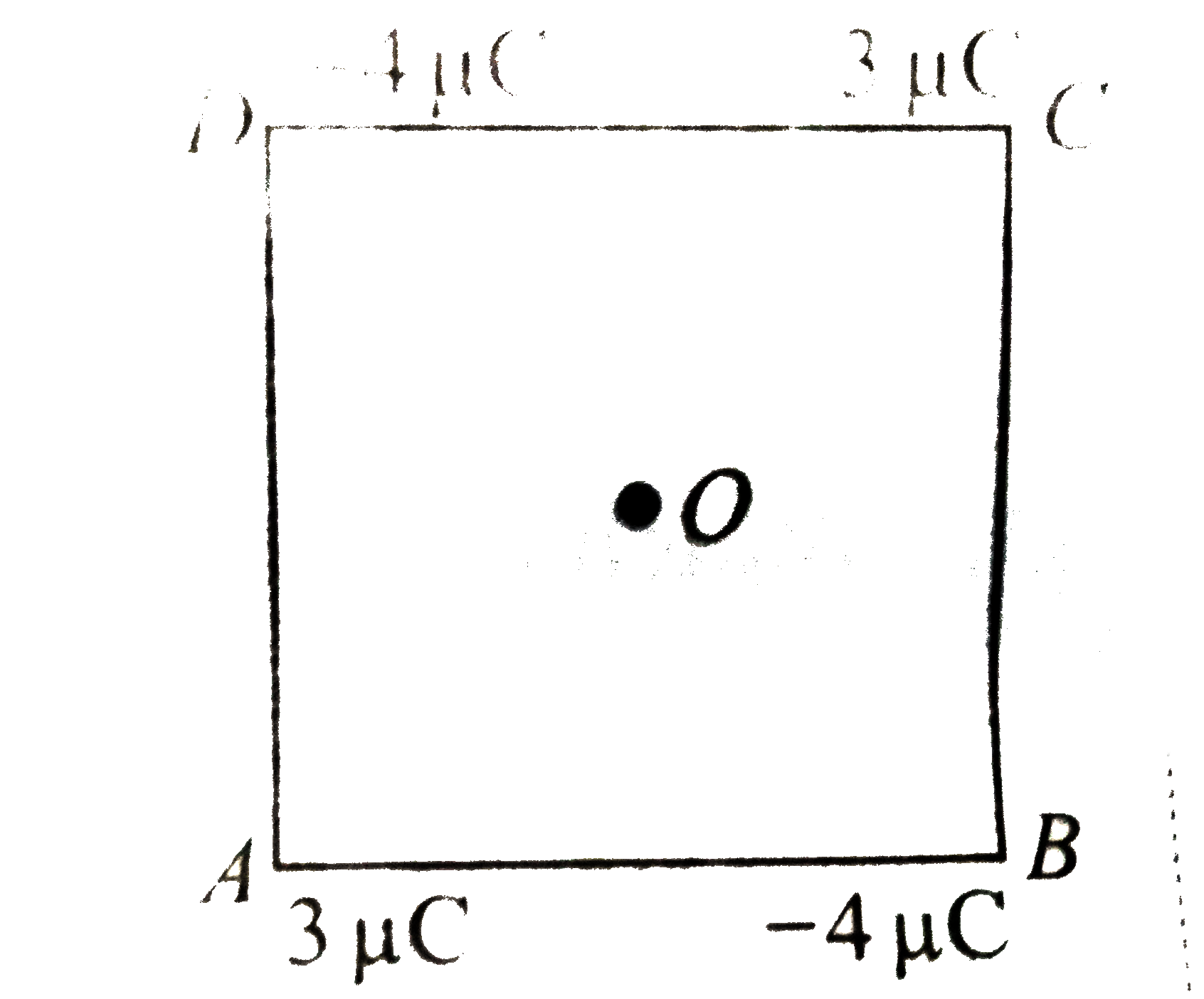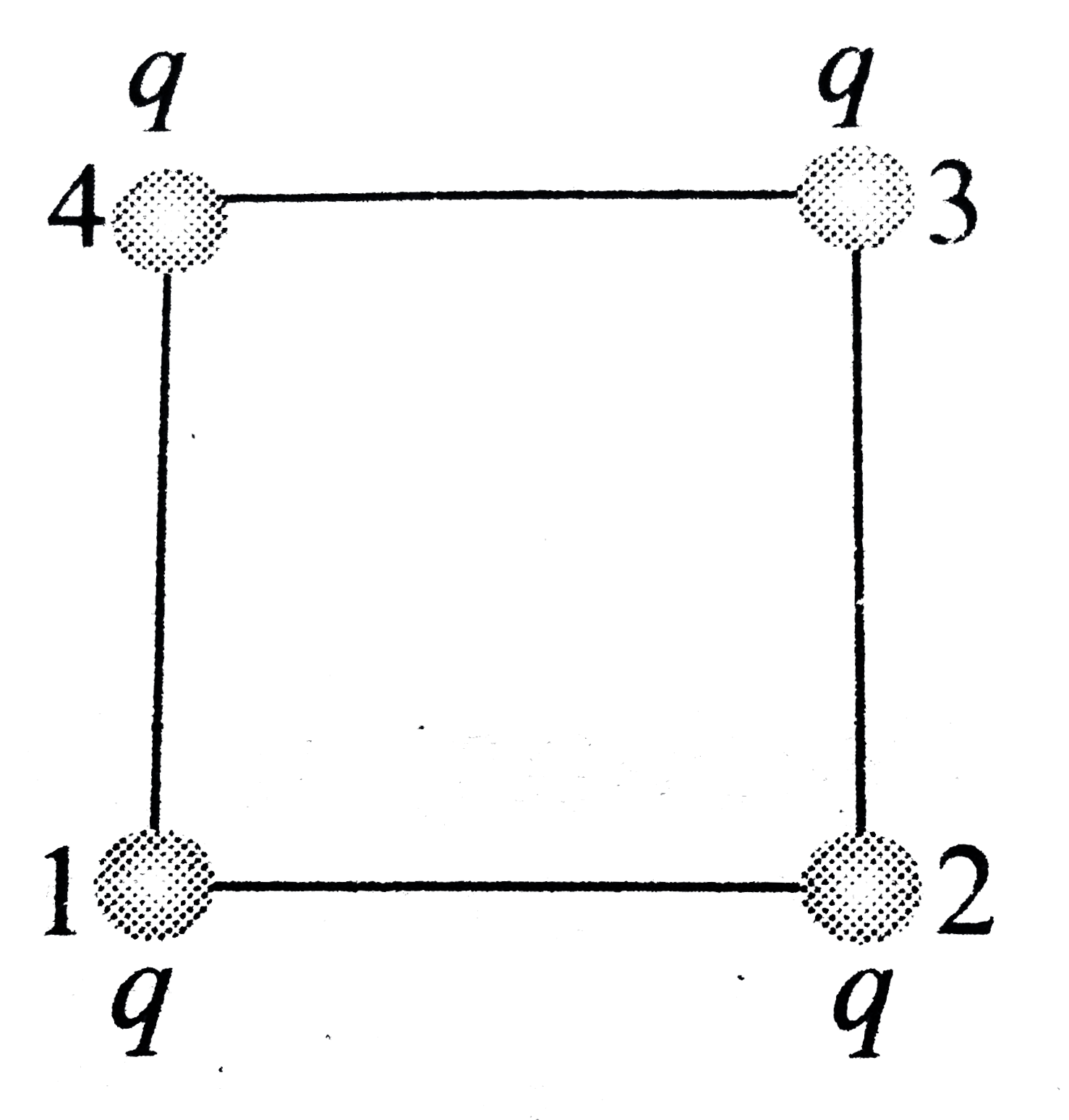It is requird to hold four equal point charges +q in equilibrium at the corners of a square. Find the point charge that will do this, if placed at the centre of the square.
(1+√22)q
(1+2√24)q
(1+2√22)q
(1+√24)q
The correct Answer is:b
To solve the problem of holding four equal point charges +q in equilibrium at the corners of a square by placing a charge at the center, we can follow these steps:
Step 1: Understand the Forces Acting on the Charges
The four charges +q at the corners of the square will repel each other due to their like charges. To achieve equilibrium, we need to introduce a charge Q at the center of the square that will exert an attractive force on the corner charges.
Step 2: Determine the Geometry
Let the side length of the square be a. The distance from the center of the square to any corner is given by r=a√2.
Step 3: Calculate the Force on One Corner Charge
The force F on one corner charge +q due to the other three corner charges can be calculated. The force between two point charges is given by Coulomb's law:
F=kq2r2
where k is Coulomb's constant. The distance r between the corner charges is a.
Step 4: Calculate the Resultant Force from Two Charges
The net force on one charge due to the other two adjacent charges can be calculated. Since these forces act at right angles to each other, the resultant force Fnet can be calculated using the Pythagorean theorem:
Fnet=√F2+F2=√2F2=F√2
Substituting F:
Fnet=√2⋅kq2a2
Step 5: Calculate the Force Exerted by Charge Q
The force exerted by the charge Q at the center on one corner charge +q is given by:
FQ=kqQr2=kqQ(a√2)2=kqQa22=2kqQa2
Step 6: Set the Forces Equal for Equilibrium
For the charges to be in equilibrium, the attractive force FQ must balance the net repulsive force Fnet:
2kqQa2=√2⋅kq2a2
We can cancel k and a2 from both sides:
2Q=√2q
Step 7: Solve for Charge Q
Rearranging the equation gives:
Q=√22q=q√2
Final Answer
The charge Q that needs to be placed at the center of the square to hold the four equal point charges +q in equilibrium is:
Q=q√2
---
The four charges +q at the corners of the square will repel each other due to their like charges. To achieve equilibrium, we need to introduce a charge Q at the center of the square that will exert an attractive force on the corner charges.
Let the side length of the square be a. The distance from the center of the square to any corner is given by r=a√2.
The force F on one corner charge +q due to the other three corner charges can be calculated. The force between two point charges is given by Coulomb's law:
F=kq2r2
where k is Coulomb's constant. The distance r between the corner charges is a.
The net force on one charge due to the other two adjacent charges can be calculated. Since these forces act at right angles to each other, the resultant force Fnet can be calculated using the Pythagorean theorem:
Fnet=√F2+F2=√2F2=F√2
Substituting F:
Fnet=√2⋅kq2a2
The force exerted by the charge Q at the center on one corner charge +q is given by:
FQ=kqQr2=kqQ(a√2)2=kqQa22=2kqQa2
For the charges to be in equilibrium, the attractive force FQ must balance the net repulsive force Fnet:
2kqQa2=√2⋅kq2a2
We can cancel k and a2 from both sides:
2Q=√2q
Rearranging the equation gives:
Q=√22q=q√2
The charge Q that needs to be placed at the center of the square to hold the four equal point charges +q in equilibrium is:
Q=q√2
Topper's Solved these Questions
- BOOK - A2ZCHAPTER - ELECTRIC CHARGE, FIELD & FLUXEXERCISE - Section B - Assertion Reasoning25videos
ELECTRIC CHARGE, FIELD & FLUX
- BOOK - A2ZCHAPTER - ELECTRIC CHARGE, FIELD & FLUXEXERCISE - AIPMTNEET Questions24videos
ELECTRIC CHARGE, FIELD & FLUX
- BOOK - A2ZCHAPTER - ELECTRIC CHARGE, FIELD & FLUXEXERCISE - Electric Dipole29videos
ELECTRIC CHARGE, FIELD & FLUX
- BOOK - A2ZCHAPTER - DUAL NATURE OF RADIATION AND MATTEREXERCISE - Section D - Chapter End Test30videos
DUAL NATURE OF RADIATION AND MATTER
- BOOK - A2ZCHAPTER - ELECTRIC POTENTIAL & CAPACITANCEEXERCISE - Section D - Chapter End Test29videos
ELECTRIC POTENTIAL & CAPACITANCE
Similar Questions
IT si required to hold four equal point charges each having a charge Q=87(1−2√2)C in equilibrium at the corners of a square.Find the point charge in coulombs that will do this if placed at the centre of the square.
View SolutionFour equal point charges, each of magnitude +Q, are to be placed in equilibrium at the corners of a square. What should be the magnitude and sign of the point charge that should be placed at the center of the square to do this job?
View Solution
Knowledge Check
- Question 1 - Select One
Four point charge are placed at the corners of a square with diagonal 2a as shown. What is the total electric field at the center of the squre?
 Akq/a2 at an angle 45∘ above the +x-axisBkq/a2 at an angle 45∘ above the -x-axisC3kq/a2 at an angle 45∘ above the -x-axisD3kq/a2 at an angle 45∘ above the +x-axis
Akq/a2 at an angle 45∘ above the +x-axisBkq/a2 at an angle 45∘ above the -x-axisC3kq/a2 at an angle 45∘ above the -x-axisD3kq/a2 at an angle 45∘ above the +x-axis - Question 2 - Select One
Four charges are arranged at the corners of a square as shown in the figure. The direction of electric field at the centre of the square is along
 ADCBBCCABDAD
ADCBBCCABDAD - Question 3 - Select One
Four charges are arranged at the corners of a square ABCD, as shown. The force on a positive charge kept at the centre of the square is
 AzeroBalong diagonal ACCalong diagonal BDDperpendicular to the side AB
AzeroBalong diagonal ACCalong diagonal BDDperpendicular to the side AB
A point charge Q is placed at the corner of a square of side a. Find the flux through the square.
View SolutionA point charge Q is placed at the corner of a square of side a, then find the flux through the square.
 View Solution
View SolutionFour point charges of +1μc each are placed on the four corners of a square of side 1 m. Calculate the electric potential at the centre of the square.
View SolutionFour point charges are placed at the corners of a square ABCD of side 10 cm, as shown in figure. The force on a charge of 1μC placed at the centre of square is
 View Solution
View SolutionFour identical point charges q are placed at four corners of a square of side a. Find the potential energy of the charge system.
 .View Solution
.View Solution

